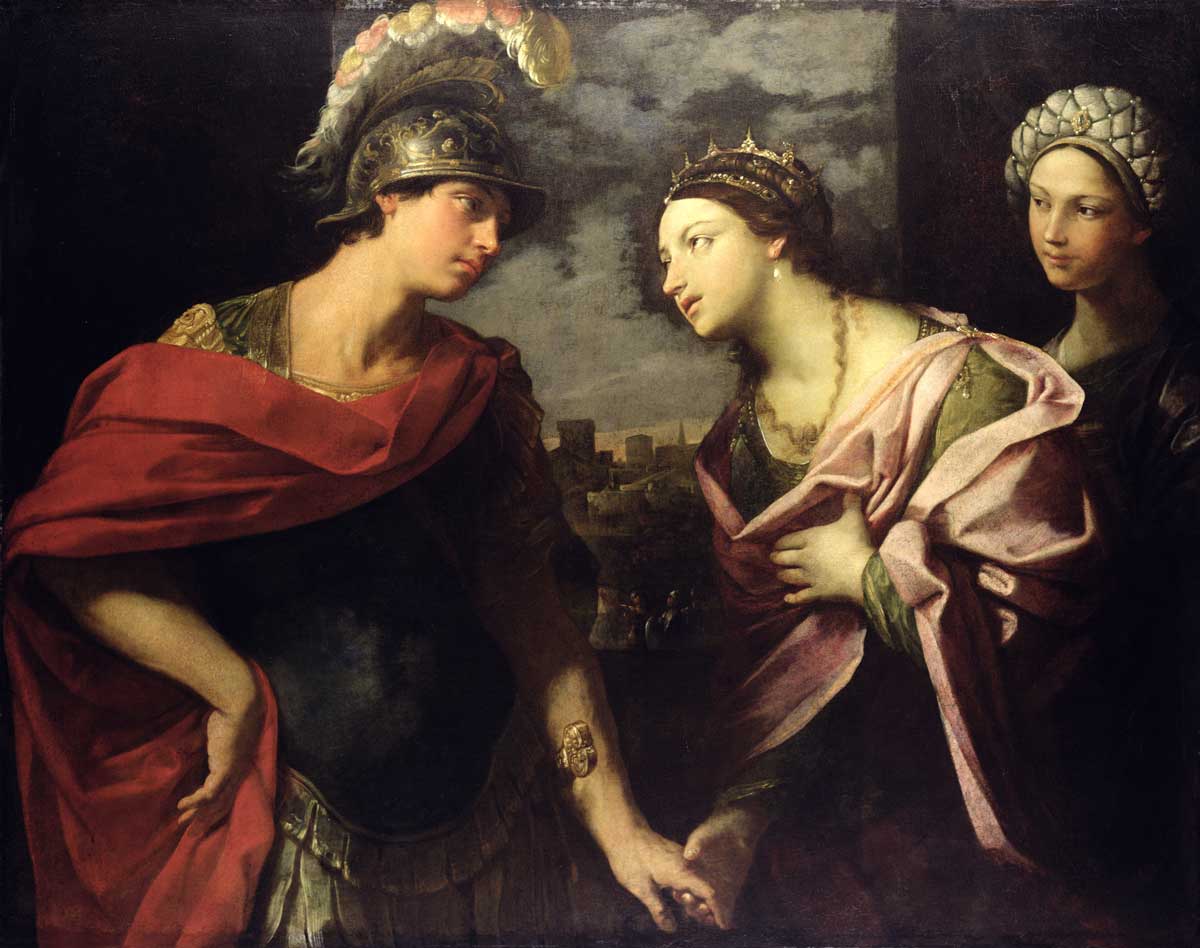Dido and Aeneas
The end of the affair of two legendary lovers sees a deadly destiny fulfilled.

Dido, founder and queen of Carthage, falls in love with the Trojan hero Aeneas and they conduct a passionate affair. Dido’s sister Anna is pleased by the coupling; she believes Aeneas and the warriors alongside him will increase the might of Carthage.
Jupiter thinks otherwise. When he learns of the affair, he sends Mercury to Carthage to remind Aeneas that he must leave for Italy and fulfill his destiny as a Roman. Aeneas prepares his fleet in secret for departure. When Dido finds out, she rages at him as he takes leave and tells Anna, depicted on the right of Guido Reni’s painting, to prepare a pyre on which the bed they slept in will burn. As will she when, soon after, she commits suicide.
In the final scene of Henry Purcell’s 1683 opera, Dido and Aeneas, the queen sings:
When I am laid in earth,
May my wrongs create
No trouble in thy breast;
Remember me, remember
me, but ah! forget my fate.
